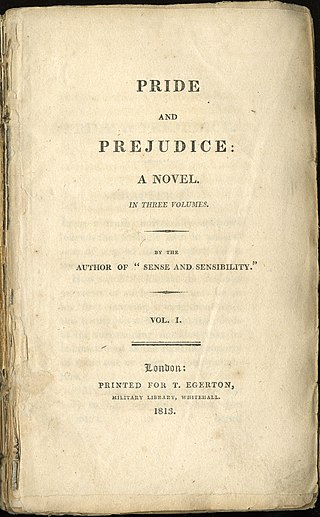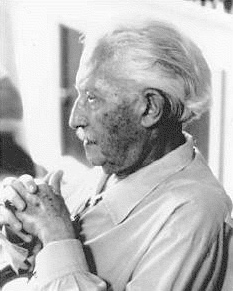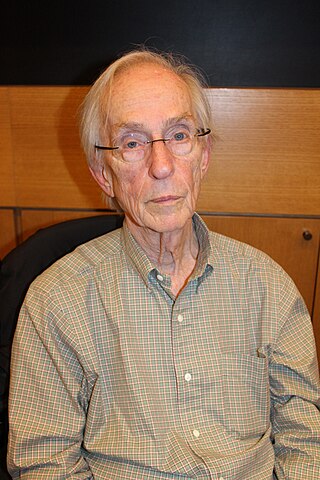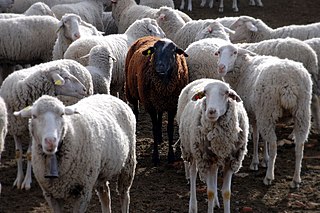Related Research Articles

Developmental psychology is the scientific study of how and why humans grow, change, and adapt across the course of their lives. Originally concerned with infants and children, the field has expanded to include adolescence, adult development, aging, and the entire lifespan. Developmental psychologists aim to explain how thinking, feeling, and behaviors change throughout life. This field examines change across three major dimensions, which are physical development, cognitive development, and social emotional development. Within these three dimensions are a broad range of topics including motor skills, executive functions, moral understanding, language acquisition, social change, personality, emotional development, self-concept, and identity formation.

Pride and Prejudice is the second novel by English author Jane Austen, published in 1813. A novel of manners, it follows the character development of Elizabeth Bennet, the protagonist of the book, who learns about the repercussions of hasty judgments and comes to appreciate the difference between superficial goodness and actual goodness.

In criminology, corporate crime refers to crimes committed either by a corporation, or by individuals acting on behalf of a corporation or other business entity. For the worst corporate crimes, corporations may face judicial dissolution, sometimes called the "corporate death penalty", which is a legal procedure in which a corporation is forced to dissolve or cease to exist.
Preadolescence is a stage of human development following middle childhood and preceding adolescence. It commonly ends with the beginning of puberty. Preadolescence is commonly defined as ages 9–12 ending with the major onset of puberty. It may also be defined as simply the 2-year period before the major onset of puberty. Preadolescence can bring its own challenges and anxieties.

In sociology, a peer group is both a social group and a primary group of people who have similar interests (homophily), age, background, or social status. Members of peer groups are likely to influence each others' beliefs and behaviour.

Erik Homburger Erikson was a Danish-German-Jewish child psychoanalyst and visual artist known for his theory on psychosocial development of human beings. He coined the phrase identity crisis.
Identity is the set of qualities, beliefs, personality traits, appearance, or expressions that characterize a person or a group.
Erikson's stages of psychosocial development, as articulated in the second half of the 20th century by Erik Erikson in collaboration with Joan Erikson, is a comprehensive psychoanalytic theory that identifies a series of eight stages that a healthy developing individual should pass through from infancy to late adulthood.

Labeling theory posits that self-identity and the behavior of individuals may be determined or influenced by the terms used to describe or classify them. It is associated with the concepts of self-fulfilling prophecy and stereotyping. Labeling theory holds that deviance is not inherent in an act, but instead focuses on the tendency of majorities to negatively label minorities or those seen as deviant from standard cultural norms. The theory was prominent during the 1960s and 1970s, and some modified versions of the theory have developed and are still currently popular. Stigma is defined as a powerfully negative label that changes a person's self-concept and social identity.

Howard Saul Becker was an American sociologist who taught at Northwestern University. Becker made contributions to the sociology of deviance, sociology of art, and sociology of music. Becker also wrote extensively on sociological writing styles and methodologies. Becker's 1963 book Outsiders provided the foundations for labeling theory. Becker was often called a symbolic interactionist or social constructionist, although he did not align himself with either method. A graduate of the University of Chicago, Becker was considered part of the second Chicago School of Sociology, which also includes Erving Goffman and Anselm Strauss.

Stigma, originally referring to the visible marking of people considered inferior, has evolved in modern society into a social concept that applies to different groups or individuals based on certain characteristics such as socioeconomic status, culture, gender, race, religion or health status. Social stigma can take different forms and depends on the specific time and place in which it arises. Once a person is stigmatized, they are often associated with stereotypes that lead to discrimination, marginalization, and psychological problems.
From a sociological perspective, deviance is defined as the violation or drift from the accepted social norms.
Primary deviance is the initial stage in defining deviant behavior. Prominent sociologist Edwin Lemert conceptualized primary deviance as engaging in the initial act of deviance. This is very common throughout society, as everyone takes part in basic form violations. Primary deviance does not result in a person internalizing a deviant identity, so one does not alter their self-concept to include this deviant identity. It is not until the act becomes labeled or tagged, that secondary deviation may materialize. According to Lemert, primary deviance is the acts that are carried out by the individual that allows them to carry the deviant label.

Sociology of terrorism is a field of sociology that seeks to understand terrorism as a social phenomenon. The field studies terrorism, why it happens, and looks at its impacts on society. The sociology of terrorism draws from the fields of political science, history, economics and psychology. The sociology of terrorism differs from critical terrorism studies, emphasizing the social conditions that enable terrorism. It also studies how individuals, as well as states, respond to such events.
James E. Marcia is a clinical and developmental psychologist. He taught at Simon Fraser University in British Columbia, Canada and the State University of New York at Buffalo in Upstate New York.
Identity formation, also called identity development or identity construction, is a complex process in which humans develop a clear and unique view of themselves and of their identity.

In the English language, black sheep is an idiom that describes a member of a group who is different from the rest, especially a family member who does not fit in. The term stems from sheep whose fleece is colored black rather than the more common white; these sheep stand out in the flock and their wool is worth less as it will not dye.

Deviance or the sociology of deviance explores the actions or behaviors that violate social norms across formally enacted rules as well as informal violations of social norms. Although deviance may have a negative connotation, the violation of social norms is not always a negative action; positive deviation exists in some situations. Although a norm is violated, a behavior can still be classified as positive or acceptable.
Kai Theodor Erikson is an Austrian-born American sociologist, noted as an authority on the social consequences of catastrophic events. He served as the 76th president of the American Sociological Association.
Edwin M. Lemert was a sociology professor at the University of California.
References
- ↑ Pfuhl, Erdwin H.; Henry, Stuart (1993-12-31). The deviance process. Transaction Publishers. pp. 168–169. ISBN 978-0-202-30470-0 . Retrieved 11 January 2011.
- ↑ Farrell, Ronald A.; Swigert, Victoria Lynn (1978). Social deviance. Lippincott. p. 143. ISBN 978-0-397-47385-4 . Retrieved 11 January 2011.
- ↑ Schur, Edwin M. (1971). Labeling deviant behavior: its sociological implications . Harper & Row. p. 79. ISBN 978-0-06-045812-6 . Retrieved 11 January 2011.
- ↑ Sandell, Richard (2002). Museums, society, inequality. Psychology Press. pp. 79–80. ISBN 978-0-415-26059-6 . Retrieved 11 January 2011.
- ↑ C. G. Jung, Memories, Dreams, Reflections (London 1983) p. 416
- ↑ Alasdair Macintyre, After Virtue (London 1981) p. 27-8
- ↑ R. Giulianotti, Sport (2005) p. 17
- ↑ Sparkes, The Sport Psychologist Vol 17 (2003)
- ↑ R. Skynner/J. Cleese, Families and how to survive them (1994) p. 189
- ↑ Virginia Satir, Peoplemaking (1983) p. 281
- ↑ Christina Hughes, Women's Contemporary Lives (2002) p. 70
- ↑ B. J. Kramer/E. H. Thompson, Men as Caregivers (2002) p. 285
- ↑ Erik H. Erikson, Childhood and Society (Penguin 1973) p. 299
- ↑ E. H. Pfuhl/S. Henry, The Deviance Process (1993) p. 168
- ↑ Richard C. Stephens, The Street Addict Role (1991) p. 36
- ↑ Tony Tanner, "Introduction" Pride and Prejudice (Penguin 1975) p. 27-8
- ↑ Judith McCombs, Essays on Margaret Attwood (1986) p. 73 and p. 86
- 1 2 Adler, Patricia A.; Adler, Peter (1991-09-15). Backboards and Blackboards: College Athletes and Role Engulfment . Columbia University Press. p. 27. ISBN 978-0-231-07307-3 . Retrieved 12 January 2011.